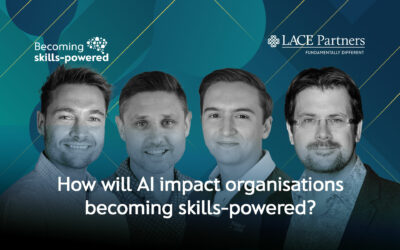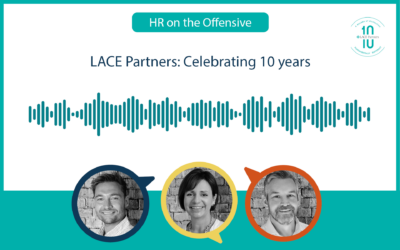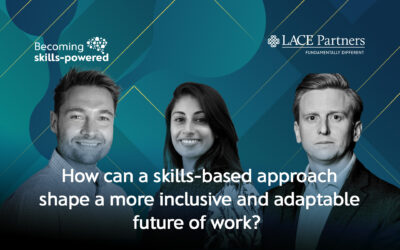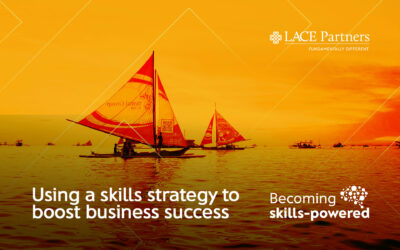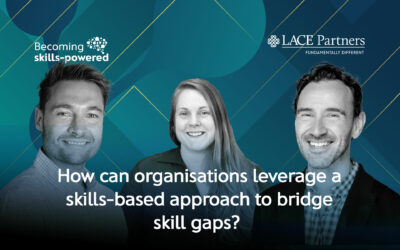In this week’s blog we reflect on the takeaways from our recent PX Forum meet up. As many of you know, we are building our community of employee experience enthusiasts who meet regularly to network, share ideas and discuss hot topics in the industry. If you would like to join the forum, please get in touch here.
In October our guests circulated around three discussion topics:
- How significant should the link between your employee’s experience and your customer experience be?
- Is the experience you are providing to your employees living your core values and behaviours?
- Are you segmenting your workforce in the right way to differentiate experiences?
Key themes: Employee experience and customer experience
We live in a world where – as a customer – you can expect intuitive, mobile first and one click experiences. You can order goods or services instantly and receive personalised experiences often without sharing much information with the vendor. The timeline between request and gratification is getting ever shorter. The HR industry has a journey to go on to execute these kinds of seamless and personalised experiences for employees and can learn from Customer Experience (CX) teams to accelerate the process. During our interactive networking event last week some of the key takeaways included:
Mirroring customer experiences
CX teams have invested considerable time and money in learning about the needs and preferences of their customers to tailor their products and services. As PX professionals we have the opportunity to think about the key moments that matter for our customers and mirror these experiences for our employees.
For example, a well-known cruise line company took this approach to revolutionise the onboarding journey for their crew. They identified the first time boarding the ship as a key moment for guests and crew members alike. By mirroring the customers’ warm welcome experience for crew members, the crew feel supported and were able to first-hand experience the excellent service they would be asked to provide to guests, ultimately helping them to become more effective in their roles.
Personalisation, empathy and connection
In the world of HR, personalised employee experiences (EX) not only help to meet needs but also create an emotional bridge between organisations and their people. Seemingly small actions can have a big impact, especially if it allows for greater flexibility for employees or touches on matters important to that individual.
A good example of this in practice is in the reward and recognition space. Financial compensation will always be important, however, organisations can also personalise the options they offer employees in terms of reward. A junior team member at the start of their career may prioritise learning opportunities whereas a carer or parent may value extra family days off. The important factors here are choice and flexibility, not making assumptions and ensuring room for continuous feedback as employees needs develop over time.
Accessibility and adoption
A further link between CX and EX sits in the power of language and communications. Tailoring language to make it accessible and motivating to staff is incredibly important; and HR tend not to focus enough on this.
There is an opportunity here for HR to become better at partnering with Internal Communications teams – to take out jargon, make it simple and to make sure interactions are timely and relevant.
It’s not as simple as HR working only on mass email blasts or projections from the top – driving one size fits all. To be successful in creating accessible communications all stakeholders in the business, including people managers, need to be brought on the journey and taught how to articulate messages from the business to all its workforce.
Connecting CX and EX data to show impact
The responsibility of where EX sits in an organisation continues to vary from organisation to organisation. However, regardless of who’s remit it falls under, a robust EX strategy will need to break down silos between internal teams to best connect the dots – and to build the strongest case for EX investment.
Drawing the correlation between EX and CX allows you to highlight the immediate impact on the bottom line, immediately changing the tone of any conversation with your C-suite. Insights and data are essential to underpin these conversations and HR can get inspiration from customer experience methodology where listening and rapidly responding to changing expectations is a must.
Key themes: How can employee experience live your core values and behaviours?
Your organisation’s values should be at the heart of your EX design, but what does that really mean and how does it work in practice?
Leadership is key to set the tone for values and behaviours
To build a culture of trust and authenticity, leaders must continuously demonstrate your organisation’s values and behaviours to influence and inspire employees. As soon as leaders stop or falter in demonstrating these, it will be difficult to hold employees and people managers to account when trying to thread them through the culture of the organisation.
Line managers vs people managers
Line managers are responsible for delivering experiences which mirror our values and behaviours. They are often the point of contact for employees, and as a result there is an expectation to translate the organisational values and behaviours to deliver the desired experiences. For example, on an employee’s first day of work, it is often the line manager who can ensure that the new hire has a positive or negative experience as they have the responsibility to onboard them.
One of the issues we often come across is that line managers are overloaded and overwhelmed, creating a ‘frozen middle’. As a result, the organisation’s vision can get lost as it filters down the various levels of the business. Additionally, line managers often do not have the capability or interest in the ‘people management’ side of their job, or do not have the empathy to create the desired experiences for employees.
A possible solution for this is to have effective ‘people managers’, who have the capability and ‘want’ to be managers; as well as technical managers who are responsible for managing employees’ day-to-day work. To enable this, we must adapt traditional career frameworks and create the relevant career pathways to ensure there are different options for our employees.
Be clear on your messaging and expectations
It is important that organisation’s values and behaviours are simple, easy to understand and that employees can relate to them. At times, we try to give our employees too much to remember which ends up with key messages being lost.
It is also a good idea to use examples and methods that bring values to life. For example, explaining why the values were chosen via effective storytelling can be the golden thread in embedding desired experiences at work.
Reward and recognition
To ensure our values and behaviours are embedded into the organisation, we should link them to reward, recognition and performance. For example, employees can measure their performance based on how they are demonstrating the defined values and behaviours and are recognised for these.
This can include utilising opportunities to celebrate when employees are demonstrating our desired values and behaviours; utilising storytelling opportunities across the organisation through ‘day in the life scenarios’, sharing short stories on broad communication channels such as the intranet, organisational ‘all-hands’ meetings or simply on social media.
Key themes: How you can segment your workforce to differentiate experience
The concept of using ‘personas’ in HR is not new, but many organisations are still delivering a uniform experience to all their employees. Why? Typically not through choice, but more an indication of maturity in this space and continuing to see the workforce through the lens of demographic and geographic data. However, this is another area where HR can truly partner with their CX teams to learn how to really understand the people within the workforce. This includes their needs, preferences, and motivations, and how to turn these insights into more personalised experiences for all their employees. Thinking in a different way is critical for HR to act in an increasingly competitive talent marketplace.
Getting your facts straight
Get insights and data! Your need to gather more ‘facts’ about your people, such as characteristics, attitudes, wants, and needs else you could be delivering experiences and solutions that may fall short of expectation. Many organisations have the basis of good data, such as engagement surveys to gather feedback and spot pain points. This can be further enriched by bespoke surveys focussing on employee preferences and qualitative conversations and a representative sample of their people to get more depth. However, if you don’t think your organisation currently has the insights needed, it’s time to define how and what you need to inform decision making.
Continuous listening is key to innovation
It is also important to recognise that a snapshot of current employees will quickly go out of date so the best approach will be one of continuous listening. Human beings are multi-faceted, and their mindsets, motivations and needs are constantly changing. They are influenced by micro and macro considerations, spanning from their life stage to global affairs.
An obvious example where the implications are still unfolding is the way COVID has impacted people’s mindset around work, which saw employees ask for greater flexibility and work-life balance. This is now being intersected by the cost-of-living crisis which brings different pressures to employees and organisations alike. Employees’ needs for financial security are now at odds with trends like the Great Resignation, creating more complex environments for HR teams. HR teams who seek to listen and validate their employee preferences regularly will ensure they are on top of understanding their ‘customers’ and are able to be proactively adapt and stay in front of their competitors.
What is the relationship between Employee Value Proposition (EVP) and personas?
EVP can be seen as the articulation of ‘the deal’ offered by an organisation to its prospective and existing workforce. For many organisations the focus has been on defining a ‘global’ – one size fits all – EVP.
The reality is, that when you truly understand your employee personas, it becomes apparent that ‘one size fits all’ won’t work. It is therefore important to consider your personas – and the personas of your candidate pools – to look at the universal truths you can apply across the EVP and the unique needs you need to tailor in your EVP. Then, it’s important to continuously measure the reality of the experience and the ‘deal’ to ensure it lives up to your promises.
If you have questions about how you can boost employee experience in your organisation or want to get involved in the PX forum, get in touch via the form below:

